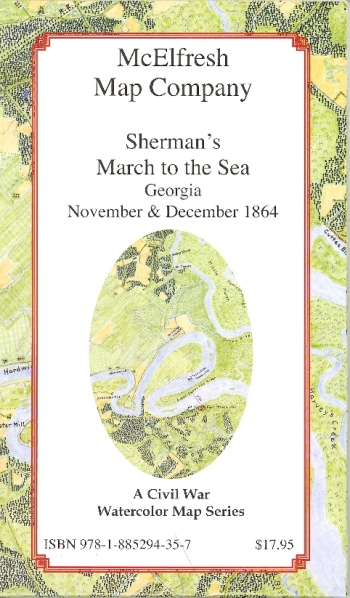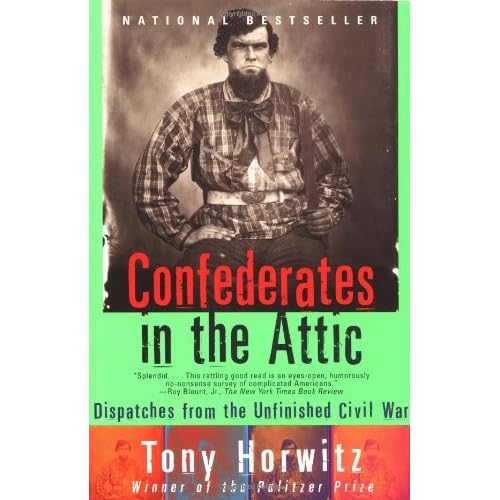I have been looking over this beautiful watercolor map by cartographer Earl McElfresh. One side shows a detailed look at the area surrounding the march, and the other side features reproductions of maps used by the Union, along with historical tidbits. It's a great reference to have while reading about the march, simply because it shows a lot of the towns and communities that no longer exist. It makes it much easier to put all these different places into perspective.
McElfresh also carries other Civil War maps, including Gettysburg, Antietam, and Shiloh. Beyond the Civil War, they also have maps of Saragtoga, D-Day, and Little Big Horn. It's a great resource for any student of war topography.
Monday, February 27, 2012
Monday, February 20, 2012
In Search of Redding Hodges
Interesting thing I found out over the weekend - but I need to do more research. A distant relative was doing some digging in the family tree and came up with this a few years ago. My great-great grandfather, Redding Hodges, was in the home guard and was allegedly killed by Sherman's troops in Sandersville, at least according to this relative. I am in the process of finding out where he got this information. This could be an amazing personal tie-in, if it happens to be true.
The problem is that there was more than one Redding Hodges alive at the time, and one of them was a corporal in the 12th Battalion Georgia Light Artillery, Company E. This particular Redding Hodges surrendered with Lee at Appomattox. Not sure if there is any relation to the other Redding Hodges, or ultimately to me, but it sure is intriguing. Stay tuned!
The problem is that there was more than one Redding Hodges alive at the time, and one of them was a corporal in the 12th Battalion Georgia Light Artillery, Company E. This particular Redding Hodges surrendered with Lee at Appomattox. Not sure if there is any relation to the other Redding Hodges, or ultimately to me, but it sure is intriguing. Stay tuned!
Wednesday, February 15, 2012
Confederates In the Attic
It's been a couple of weeks since I've had time to blog, but I've been busy doing more research, including reading this incredible book by Tony Horwitz, Confederates in the Attic. Horwitz basically explores the uniquely Southern obsession with the Civil War, by hanging out with hardcore reenactors and visiting various battlefields.
He also takes a hard look at the racial overtones and unresolved political issues left over from the war, examining the complicated hangups that still linger almost 150 years later. It has been valuable to me, simply because it is helping me gain some focus on the intent of my documentary.
It seems to me that in the case of Sherman's March, a deep and bitter resentment has caused an ongoing willful ignorance in Georgia about the facts of the March. History has been supplanted by myth, and the end result is a population of people who are not aware of the history of their surroundings. I want my film to explore why this has happened, and in the end, show how this is being remedied.
He also takes a hard look at the racial overtones and unresolved political issues left over from the war, examining the complicated hangups that still linger almost 150 years later. It has been valuable to me, simply because it is helping me gain some focus on the intent of my documentary.
It seems to me that in the case of Sherman's March, a deep and bitter resentment has caused an ongoing willful ignorance in Georgia about the facts of the March. History has been supplanted by myth, and the end result is a population of people who are not aware of the history of their surroundings. I want my film to explore why this has happened, and in the end, show how this is being remedied.
Subscribe to:
Posts (Atom)


